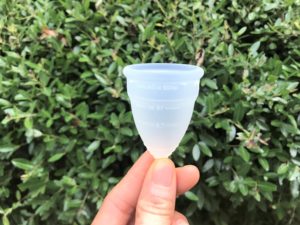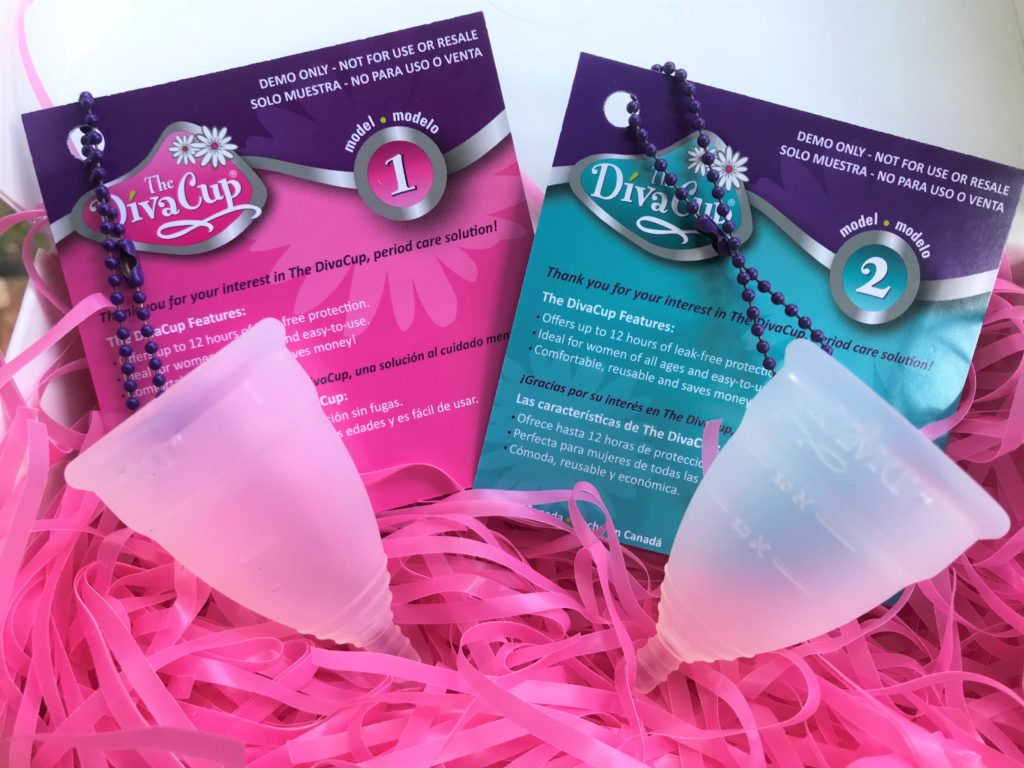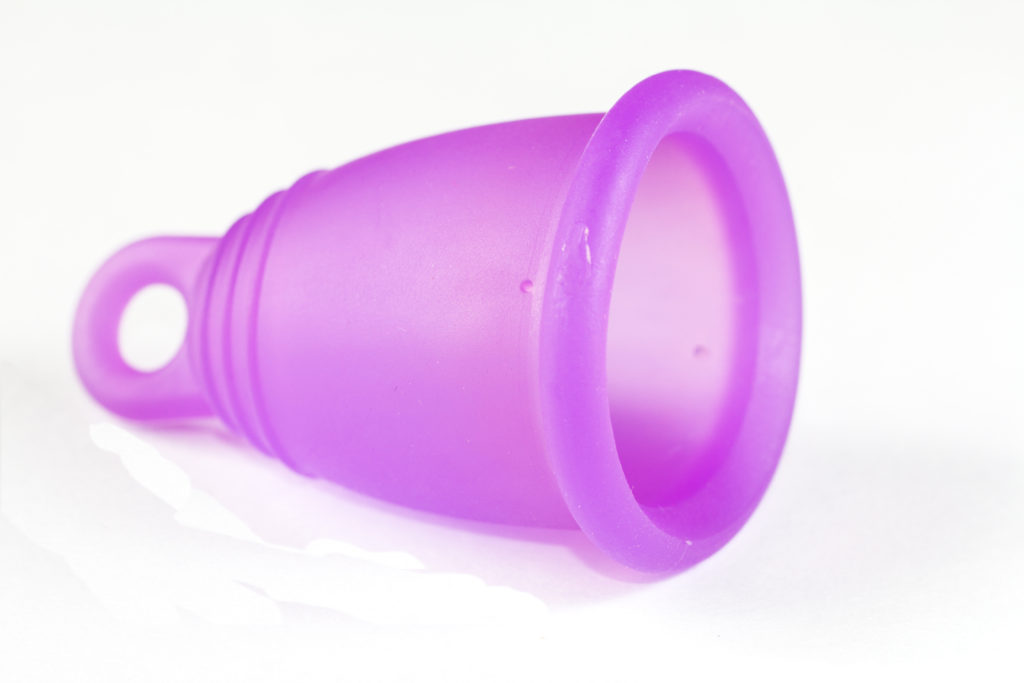Please note that this post contains affiliate links and any sales made through such links will reward me a small commission.

Side effects from menstrual cups are a reality. I’ve read about them and have heard about them from friends and colleagues. Here’s the thing… I’ve always wanted to try a cup but to be honest, I wasn’t sure that it was right for me. But I finally decided to take the plunge. You might be completely satisfied with your current menstrual products, and using a cup may be the furthest thing from your mind. But having insight about menstrual cups from someone who as actually used one and having tips for success can only help you make your experience a little less frightening when you finally decide to use one right?
So What’s a Menstrual Cup Anyway?
If you’re not familiar with these products, let me give you a brief overview. Menstrual cups are flexible, reusable cups made of rubber or silicone that worn inside your vagina to collect your menstrual flow. The buzz about these products has increased in recent years, especially for women who are looking a more environmentally-friendly menstrual alternative.
With various brands, colors, lengths, and firmness just selecting the right cup can be a little overwhelming. Thankfully, this comparison chart breaks down some of the most popular brands on the market.
I opted for the Diva cup since I was familiar with this brand and their cups are regulated and manufactured using only top-quality materials (no latex, plastic, dye or BPA). It also doesn’t hurt that these menstrual cups are created and manufactured in my native country- Canada.
How To Use a Menstrual Cup
So one of the most common menstrual cup side effects is its tricky insertion. First things first, sterilize your cup by boiling it in a pot of water for 5 to 10 minutes. Use the user’s guide for instructions about how to insert your cup. If you’re more of a visual learner, Google menstrual cup insertion and removal videos to help you learn how to use your menstrual cup. I found this Diva Cup video incredibly helpful.
https://www.youtube.com/watch?v=5NLAltYsmEI
After sterilizing your cup and washing your hands, either the “U” fold or the “push down fold” to insert your menstrual cup. I tried them both but I had more success using the push-down fold.
Hold the cup between your thumb and your fingers and slide it in trying your best to keep the cup horizontal. Push the cup back towards your tailbone until the stem of the cup is even with the opening of your vagina. I found that sitting on the toilet was easiest for insertion but you could also try squatting.
You then want to rotate your cup 360 degrees to make sure your cup is sealed and opened fully (more on this later).
How do You Get the Darn Thing Out?
To take your cup out, pinch the base of the cup to release the seal. Keep the cup upright and empty the content into the toilet. Wash your cup with soap and water and reinsert. That’s it!

Tips To Overcome Menstrual Cup Side Effects
Learning how to use your cup will take time but leaking or discomfort does not have to part of your experience. So, here are three tips to help you overcome the most common menstrual cup side effects:
1. You Gotta Touch Yourself
The key to success with your cup is to be comfortable touching yourself. Your fingers are going to be all up in your canal, so I also strongly suggest cutting your nails. Yes, there will be blood and it might get messy. You might even have to take the cup out and reinsert it a few times, so if blood and discharge make you a little squeamish…take some time to mentally prepare before delving into the world of cups.
This actually wasn’t a big deal for me since I’ve been using tampons without applicators for years. Once you figure out your technique, the “ick factor” decreases significantly.
No Leaks Here
2. The Seal is Bae
The secret to overcoming the most common menstrual cup side effect (leaking) is a proper seal. After inserting my Diva Cup, I held the base and rotated the cup 360 degrees. Just to be completely transparent, it took me a few tries to get this right. Rotating your cup ensures that it is completely open and is sitting in the right place. You shouldn’t be able to feel it and it definitely should not be painful.
I’m not going to lie I was super paranoid about my cup leaking, so I doubled up my protection by also wearing my leak-proof period panties. (read more about menstrual panties here).
I slept with my cup and undies overnight and was overjoyed that I didn’t wake up in a puddle a blood and stained sheets.
To really test out my cup, I decided to use it on my morning run. If I was going to be a cup convert it had to hold up after forty minutes of outdoor running. I was elated that I made it back to my house completely leak-free.
It’s Gonna Take Practice
3. Practice and Patience
Like anything new, using your cup will take time, patience, and practice. You’ll probably have more success if you start using your cup during a low-stress situation-like over the weekend. My period started at home on Friday night giving me ample time to become more familiar with using the cup.
It took a couple of tries for me to figure out how to get it in, and I was also worried about whether it was sitting the right spot, or if it would leak. But by day two I had it mastered. My seal was airtight, it didn’t fall out, and I was able to take it out, empty it, and reinsert like a champ.
Other Menstrual Cup Side Effects
Although I’m really getting into this whole cup thing, I should mention some of the other side effects. Firstly, cleaning your cup after taking it out can be a hassle when you are not at home. I emptied my cup every 4-6 hours (although you can leave it in up to 12 hours). As a result, I was always on the hunt for private bathrooms with a sink so that I could rise my cup. So I would suggest carrying sanitary wipes. One small warning- only use mild, oil, or fragrance-free cleansers on your silicone cup. Using harsh chemicals may cause damage.
Using the menstrual cup can also put some women at a higher risk for toxic shock syndrome (TSS) a rare but life-threatening complication as a result of certain types of bacterial infections. A recent study found a higher rate of TSS causing bacteria and toxins in menstrual cups made from thermoplastic elastomer.
Ultimately, you should be using the same precautions with a menstrual cup that you use with your tampons. To help reduce your risk for infection, always wash your hands before inserting and removing your cup and only use your cup about 6 hours at a time.

Give Menstrual Cup Side Effects the Boot
Overall, I went from being a cup skeptic to becoming a cup enthusiast. Honestly, it will take some time to learn how to use a menstrual cup but the user’s guide and YouTube videos help to ease fears and anxiety. I didn’t experience leaking after I mastered the cup seal and I loved not having figure out where to hide my tampon when I made my bathroom runs.
Even though you can leave a cup in for up to 12 hours I recommend taking it out every couple of hours and cleaning it to decrease your risk for TSS. When using a single-occupancy public restroom, you can wash your cup with mild soap and water and then re-insert it but make sure you have cleansing wipes on hand just in case.
Knowing how to address menstrual cup side effect and the fact that that I only have to replace my cup once a year, are just some of the reasons why I’ll be using a menstrual cup again. I mean, I’m all in for saving money. And who knows, in another few years (cough, cough, menopause), perhaps my tender-breasted, abdominal cramping, bloated period days will be a thing of the past.
